Daniel Karl I. Weidele
AutoDOViz: Human-Centered Automation for Decision Optimization
Feb 19, 2023Abstract:We present AutoDOViz, an interactive user interface for automated decision optimization (AutoDO) using reinforcement learning (RL). Decision optimization (DO) has classically being practiced by dedicated DO researchers where experts need to spend long periods of time fine tuning a solution through trial-and-error. AutoML pipeline search has sought to make it easier for a data scientist to find the best machine learning pipeline by leveraging automation to search and tune the solution. More recently, these advances have been applied to the domain of AutoDO, with a similar goal to find the best reinforcement learning pipeline through algorithm selection and parameter tuning. However, Decision Optimization requires significantly more complex problem specification when compared to an ML problem. AutoDOViz seeks to lower the barrier of entry for data scientists in problem specification for reinforcement learning problems, leverage the benefits of AutoDO algorithms for RL pipeline search and finally, create visualizations and policy insights in order to facilitate the typical interactive nature when communicating problem formulation and solution proposals between DO experts and domain experts. In this paper, we report our findings from semi-structured expert interviews with DO practitioners as well as business consultants, leading to design requirements for human-centered automation for DO with RL. We evaluate a system implementation with data scientists and find that they are significantly more open to engage in DO after using our proposed solution. AutoDOViz further increases trust in RL agent models and makes the automated training and evaluation process more comprehensible. As shown for other automation in ML tasks, we also conclude automation of RL for DO can benefit from user and vice-versa when the interface promotes human-in-the-loop.
FiberStars: Visual Comparison of Diffusion Tractography Data between Multiple Subjects
May 16, 2020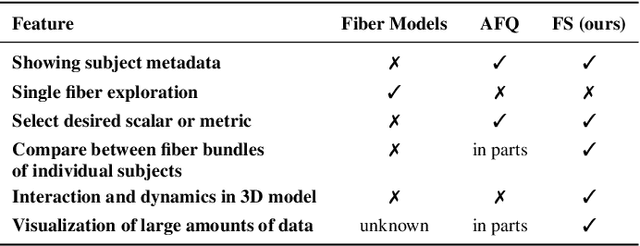
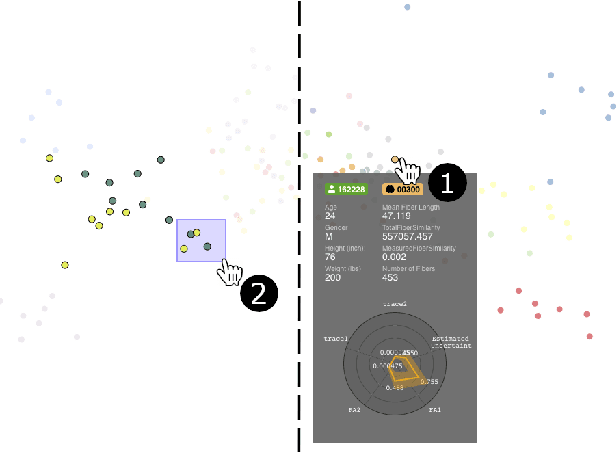

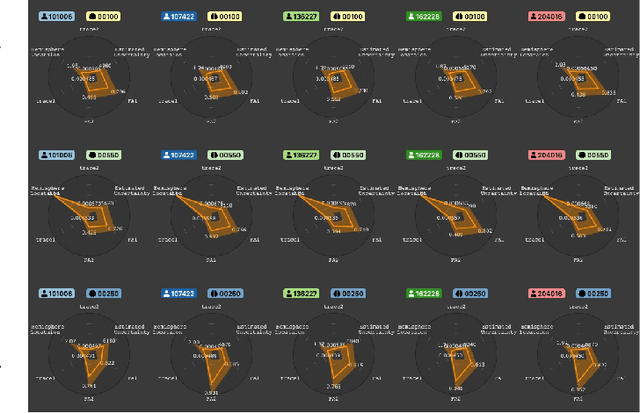
Abstract:Tractography from high-dimensional diffusion magnetic resonance imaging (dMRI) data allows brain's structural connectivity analysis. Recent dMRI studies aim to compare connectivity patterns across thousands of subjects to understand subtle abnormalities in brain's white matter connectivity across disease populations. Besides connectivity differences, researchers are also interested in investigating distributions of biologically sensitive dMRI derived metrics across subject groups. Existing software products focus solely on the anatomy or are not intuitive and restrict the comparison of multiple subjects. In this paper, we present the design and implementation of FiberStars, a visual analysis tool for tractography data that allows the interactive and scalable visualization of brain fiber clusters in 2D and 3D. With FiberStars, researchers can analyze and compare multiple subjects in large collections of brain fibers. To evaluate the usability of our software, we performed a quantitative user study. We asked non-experts to find patterns in a large tractography dataset with either FiberStars or AFQ-Browser, an existing dMRI exploration tool. Our results show that participants using FiberStars can navigate extensive collections of tractography faster and more accurately. We discuss our findings and provide an analysis of the requirements for comparative visualizations of tractography data. All our research, software, and results are available openly.
AutoAIViz: Opening the Blackbox of Automated Artificial Intelligence with Conditional Parallel Coordinates
Jan 17, 2020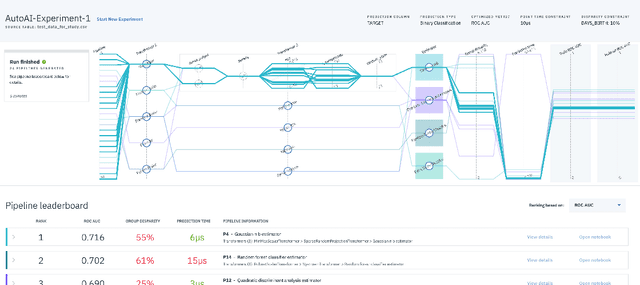
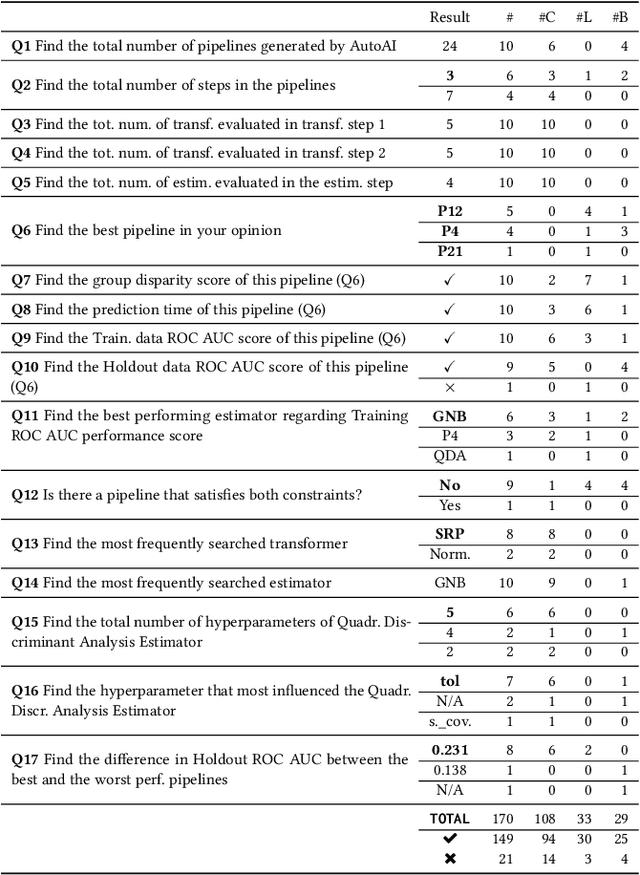
Abstract:Artificial Intelligence (AI) can now automate the algorithm selection, feature engineering, and hyperparameter tuning steps in a machine learning workflow. Commonly known as AutoML or AutoAI, these technologies aim to relieve data scientists from the tedious manual work. However, today's AutoAI systems often present only limited to no information about the process of how they select and generate model results. Thus, users often do not understand the process, neither do they trust the outputs. In this short paper, we provide a first user evaluation by 10 data scientists of an experimental system, AutoAIViz, that aims to visualize AutoAI's model generation process. We find that the proposed system helps users to complete the data science tasks, and increases their understanding, toward the goal of increasing trust in the AutoAI system.
Anti-Money Laundering in Bitcoin: Experimenting with Graph Convolutional Networks for Financial Forensics
Jul 31, 2019



Abstract:Anti-money laundering (AML) regulations play a critical role in safeguarding financial systems, but bear high costs for institutions and drive financial exclusion for those on the socioeconomic and international margins. The advent of cryptocurrency has introduced an intriguing paradox: pseudonymity allows criminals to hide in plain sight, but open data gives more power to investigators and enables the crowdsourcing of forensic analysis. Meanwhile advances in learning algorithms show great promise for the AML toolkit. In this workshop tutorial, we motivate the opportunity to reconcile the cause of safety with that of financial inclusion. We contribute the Elliptic Data Set, a time series graph of over 200K Bitcoin transactions (nodes), 234K directed payment flows (edges), and 166 node features, including ones based on non-public data; to our knowledge, this is the largest labelled transaction data set publicly available in any cryptocurrency. We share results from a binary classification task predicting illicit transactions using variations of Logistic Regression (LR), Random Forest (RF), Multilayer Perceptrons (MLP), and Graph Convolutional Networks (GCN), with GCN being of special interest as an emergent new method for capturing relational information. The results show the superiority of Random Forest (RF), but also invite algorithmic work to combine the respective powers of RF and graph methods. Lastly, we consider visualization for analysis and explainability, which is difficult given the size and dynamism of real-world transaction graphs, and we offer a simple prototype capable of navigating the graph and observing model performance on illicit activity over time. With this tutorial and data set, we hope to a) invite feedback in support of our ongoing inquiry, and b) inspire others to work on this societally important challenge.
 Add to Chrome
Add to Chrome Add to Firefox
Add to Firefox Add to Edge
Add to Edge